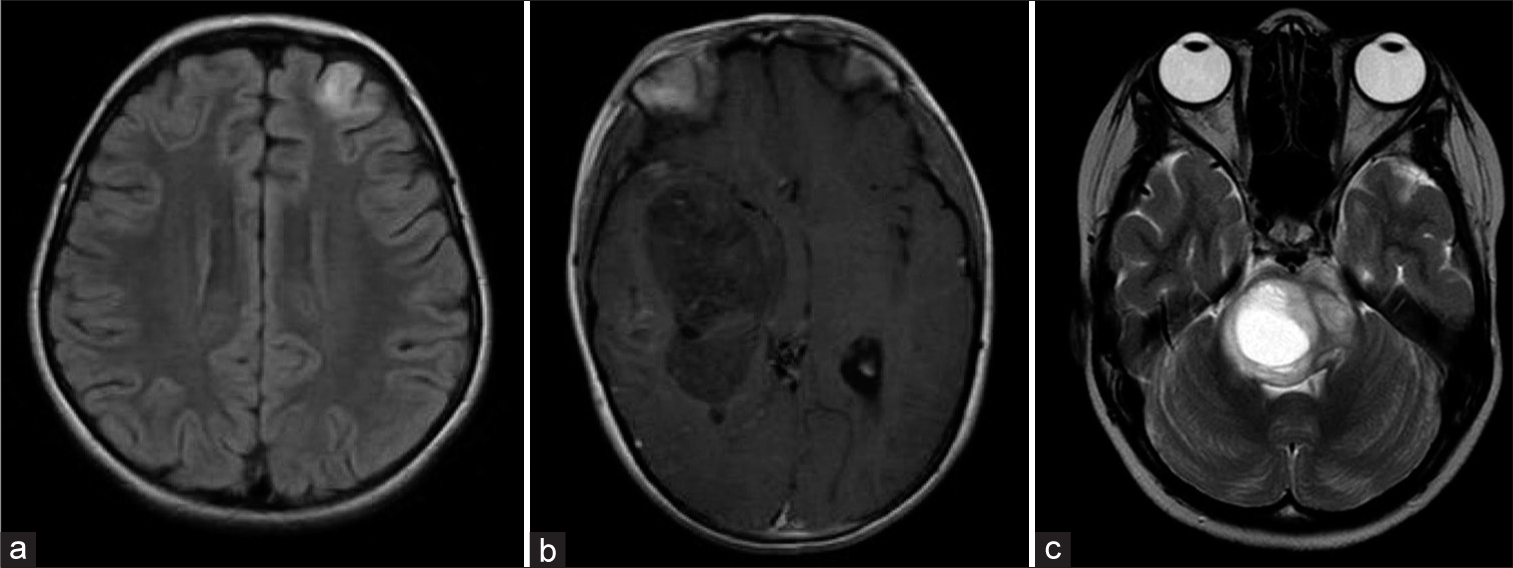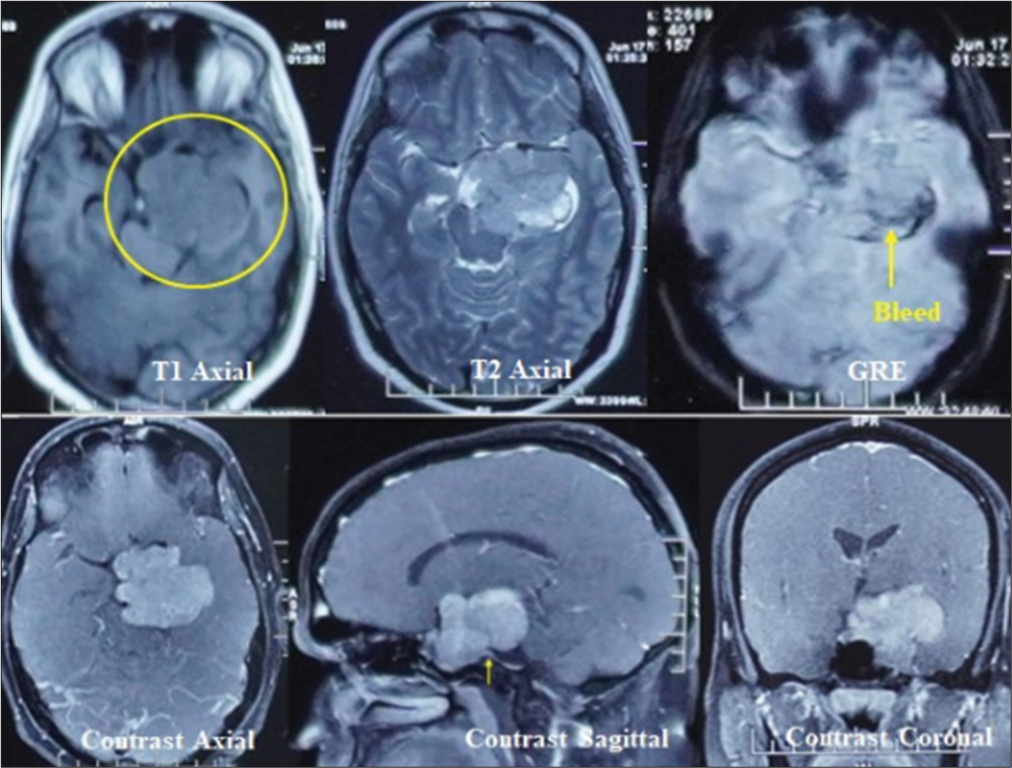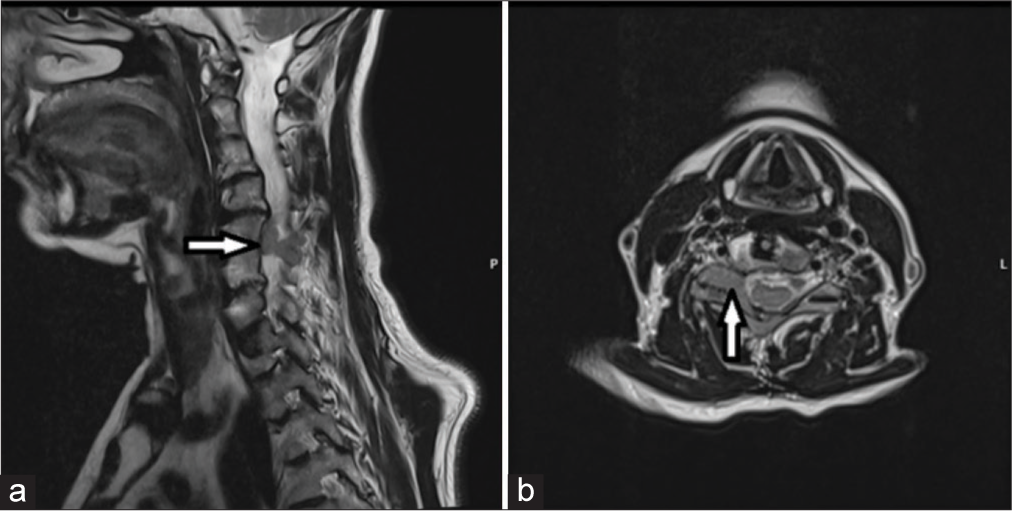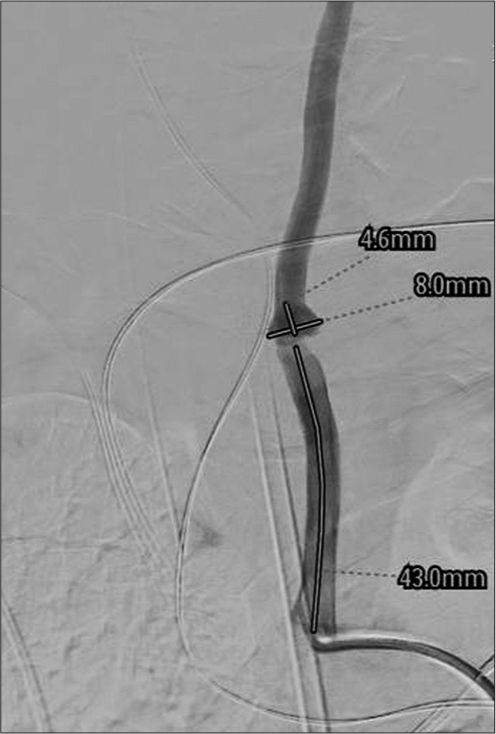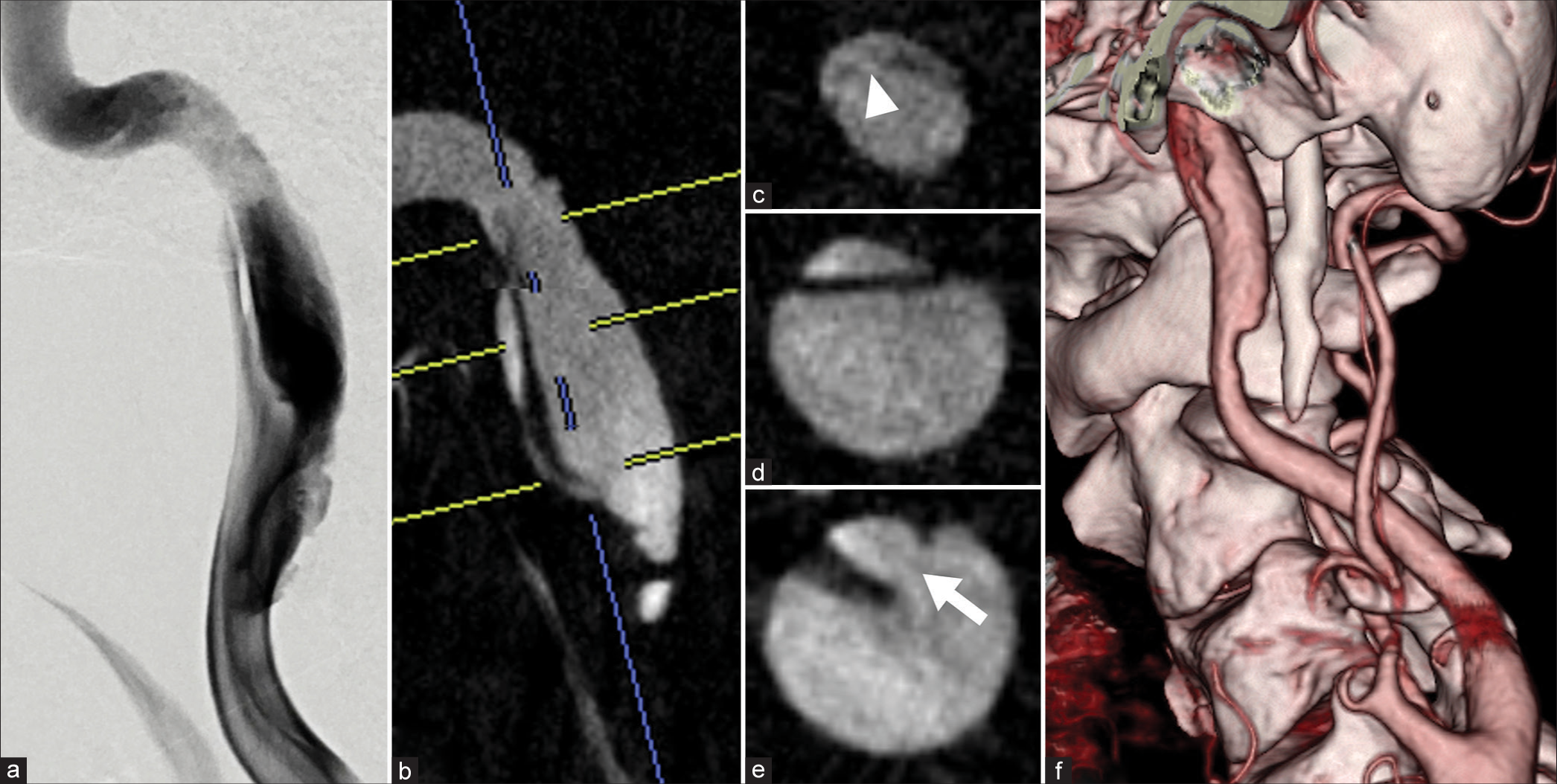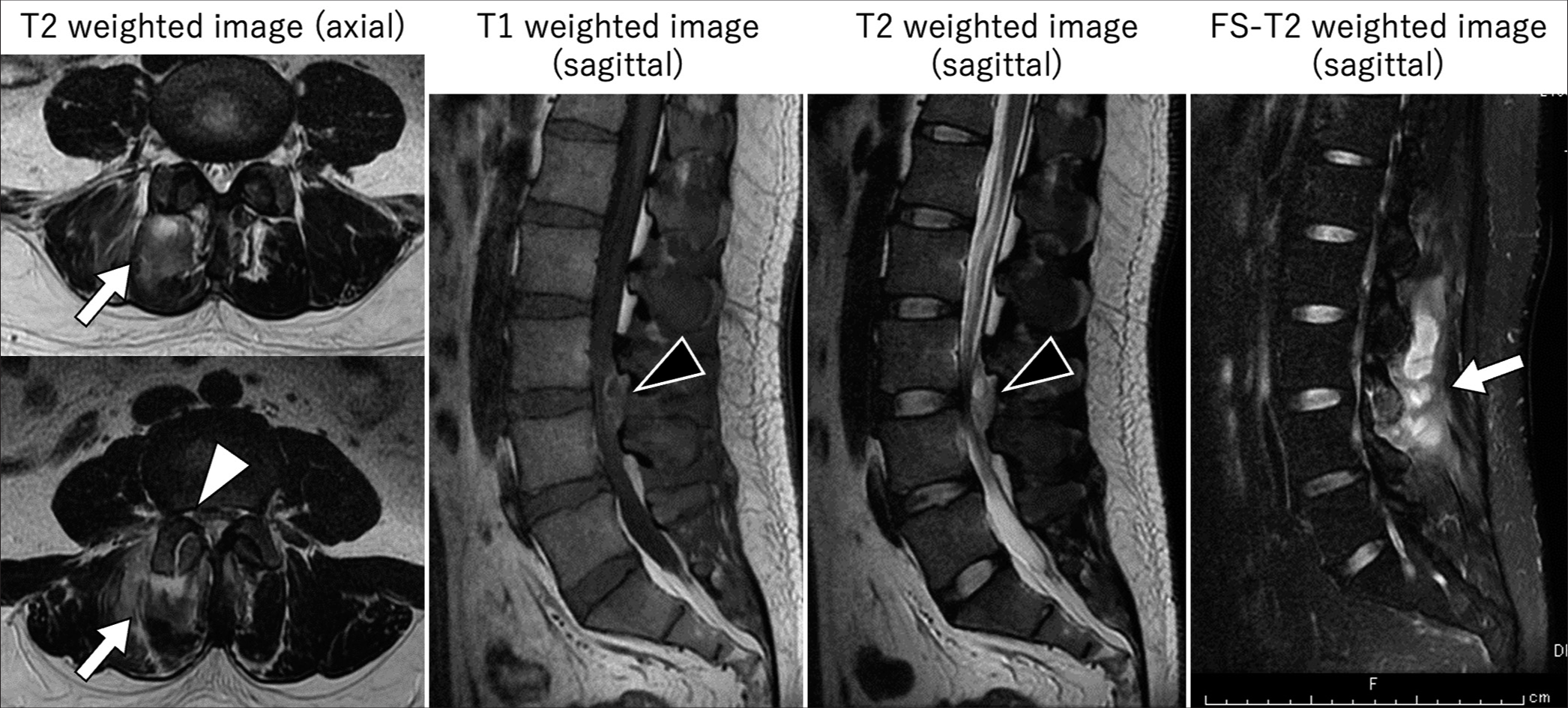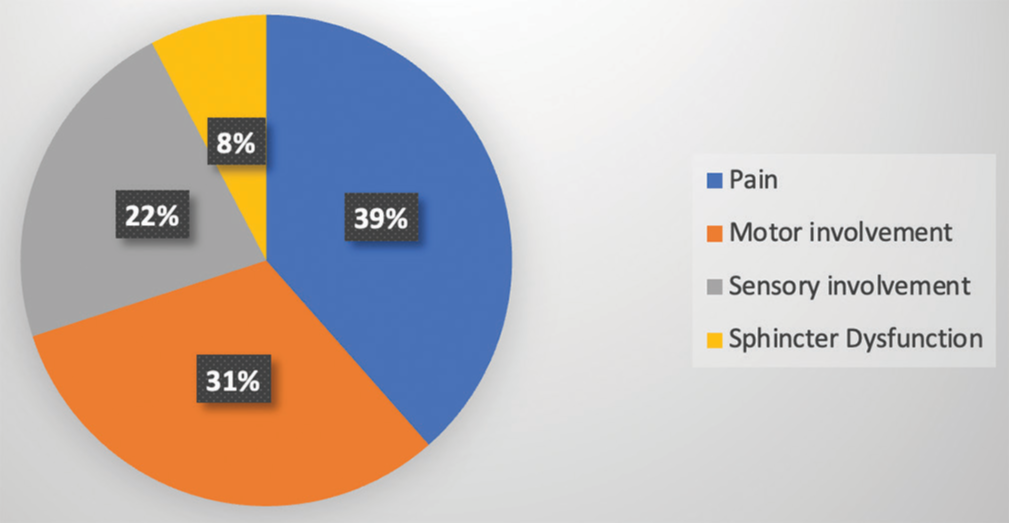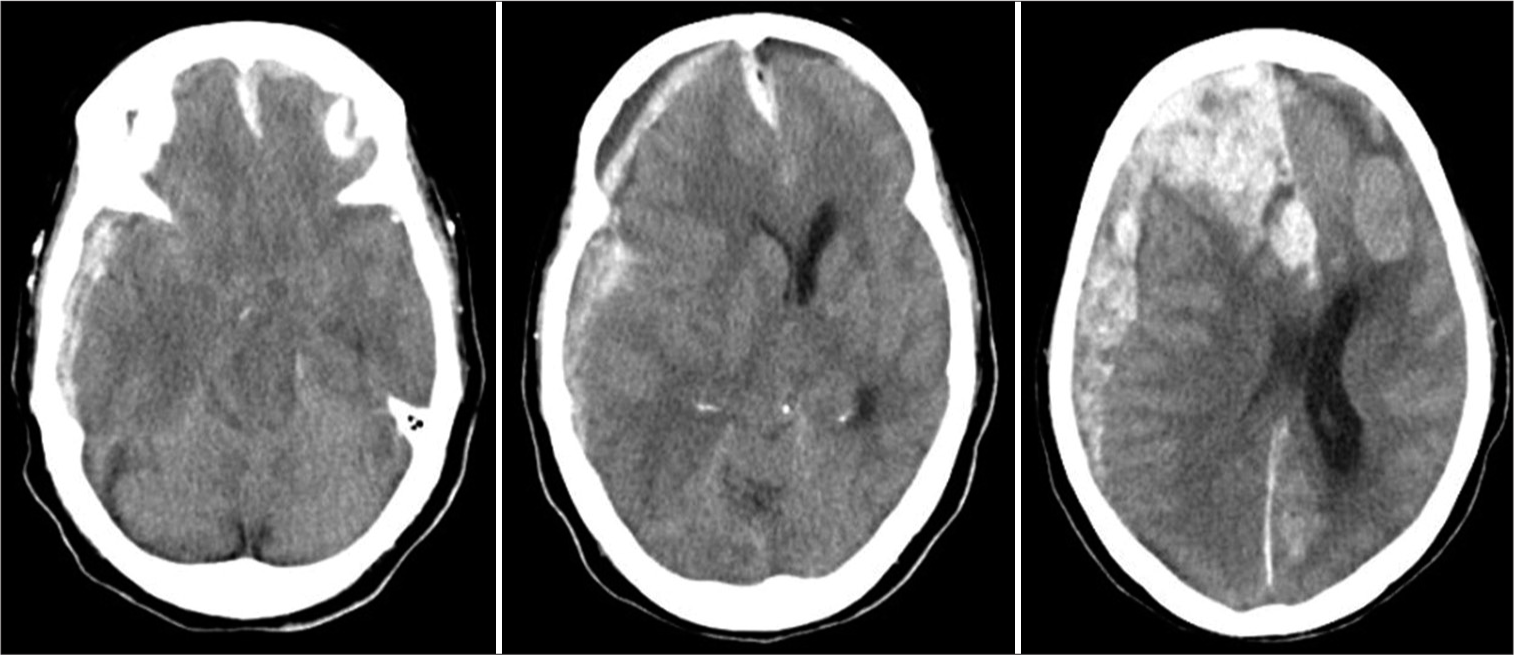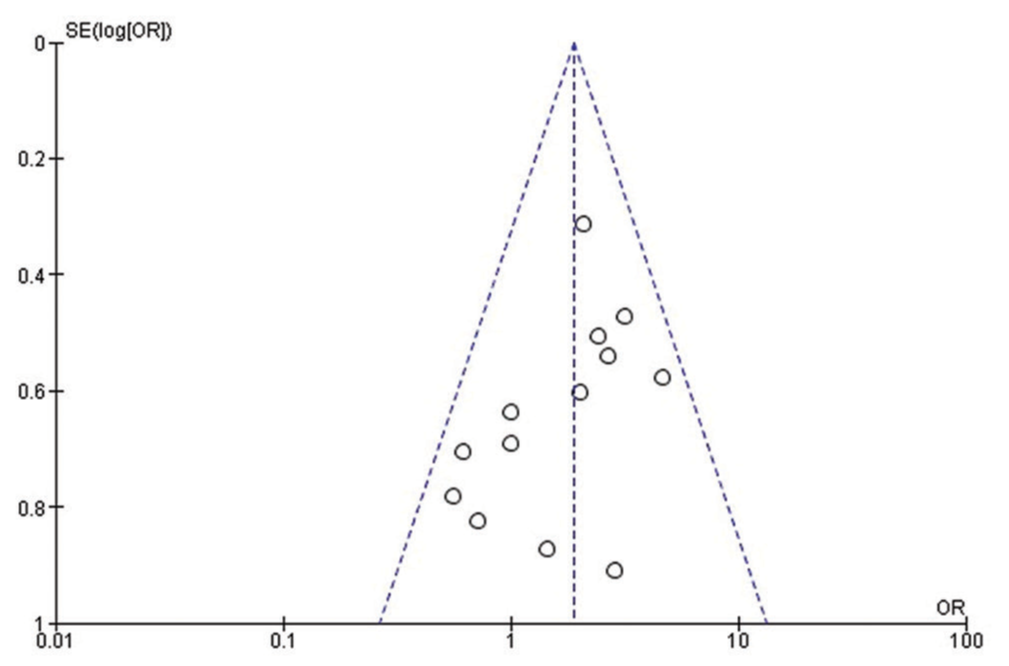New CNS tumor classification: The importance in pediatric neurosurgical practice
Date of publication: 12-Apr-2024
Background: The management of the central nervous system (CNS) tumors in the pediatric population is crucial in neurosurgical practice. The World Health Organization (WHO) has evolved its classification of CNS tumors from the 19th century to the 5th edition, published in 2021, incorporating molecular advancements. This transition from morphology to molecular characterization is ongoing.
Medically responsive amyloidogenic giant sellar-parasellar prolactinoma
Date of publication: 12-Apr-2024
Background: Giant prolactinomas are rare; among them, the amyloidogenic variant, prolactinomas with extensive spherical amyloid deposits, are rare, with only 30 cases reported with recommendations of surgical management contrary to the routine prolactinoma’s medical management.
A rare presentation of leiomyosarcoma metastasis to the cervical spine: A case report and a brief review
Date of publication: 12-Apr-2024
Background: Leiomyosarcoma (LMS) is a rare malignancy that originates from smooth muscle. The most common sites of metastases include the lungs, liver, kidney, and skin. Notably, metastases of LMS to the central nervous system/or spine are extremely rare. When a cervical spinal LMS lesion was encountered, the patient successfully underwent gross total tumor resection with negative margins.
Thrombectomy and stenting of pseudoaneurysm from transcarotid artery revascularization
Date of publication: 12-Apr-2024
Background: Transcarotid artery revascularization (TCAR) is becoming an increasingly popular treatment of carotid stenosis. Despite this rapid adoption, little in the literature describes the associated complications of this procedure.
Extracranial internal carotid artery-dissecting aneurysm having a re-entry tear and causing lower cranial nerve palsies treated with flow-diverting stent: A case report
Date of publication: 12-Apr-2024
Background: Extracranial internal carotid artery (ICA)-dissecting aneurysms (DAs) rarely cause re-entry tears and lower cranial nerve palsies. The therapeutic strategies for these pathologies are not well established. This report presents a case of an extracranial ICA -DA with a re-entry tear that caused lower cranial nerve palsy.
Psoriasis vulgaris of the skin caused a L3-L4 lumbar epidural spinal abscess
Date of publication: 12-Apr-2024
Background: In a 31-year-old male, psoriasis vulgaris (PV) of the skin caused paraparesis attributed to a L3-L4 epidural spinal abscess that required emergent surgical decompression.
Adequate control of seizures in a case of lead migration and neuromodulation of the posterior Sylvian junction: A case report
Date of publication: 05-Apr-2024
Background: This report aims to describe the neuromodulation effect on seizure control in a patient with a left hippocampal migrated electrode to the Posterior Sylvian Junction (PSJ) during a follow-up of 17 years.
Functional outcomes in intradural extramedullary spinal tumors
Date of publication: 05-Apr-2024
Background: Intradural extramedullary (IDEM) spinal cord tumors account for approximately two-thirds of benign intraspinal neoplasms. These are amenable to gross total excision but can have variable functional outcomes, which plays a key role in assessing their impact on a patient’s quality of life. Understanding the functional outcomes associated with these tumors is crucial for healthcare professionals to devise appropriate treatment plans and provide comprehensive care.
Fatal convexity and interhemispheric acute subdural hematoma from a falx meningioma: A case report
Date of publication: 05-Apr-2024
Background: Hemorrhagic meningiomas are rare. We report a rare case of nontraumatic convexity and interhemispheric acute subdural hematoma (ASDH) caused by a falx meningioma.
Comparing equiosmolar hypertonic saline and mannitol for achieving brain relaxation in elective craniotomy patients: A systematic review and meta-analysis
Date of publication: 05-Apr-2024
Background: This study strives to provide a current and thorough assessment of the comparative efficacy and safety between equiosmolar quantities of hypertonic saline (HS) and mannitol in facilitating brain relaxation for patients undergoing elective craniotomies.


